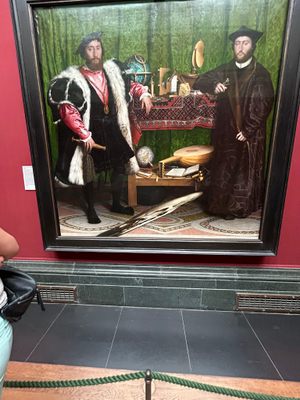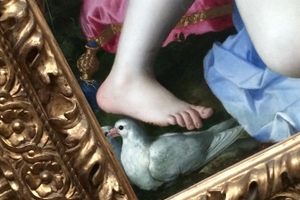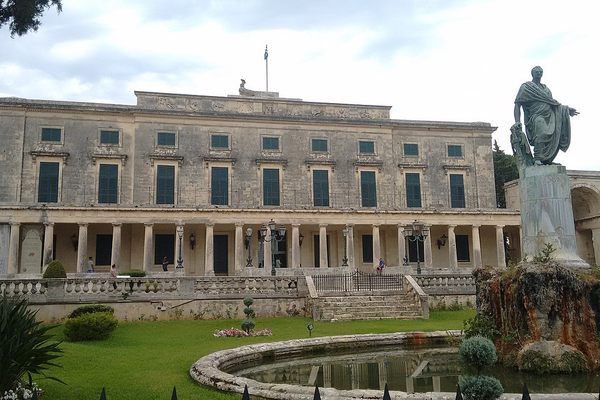About
This work by German master Hans Holbein the Younger is dated to 1533 and was commissioned by Jean de Dinteville, French ambassador to England, who appears in the painting on the left. The other character is his friend George de Selves, a scholar and diplomat.
The painting is rich with symbolism. It includes two spectacular globes, an arithmetic book, a sundial, a shepherd’s dial, and more. It’s believed they’re symbolic of the political and religious divisions of the time. But without a doubt, the strangest object is the unusual disc that appears in the center of the painting, which almost looks like it was slapped atop the artwork.
It was eventually discovered that the mysterious shape is actually a skull, painted as an anamorphic perspective. It’s basically a puzzle; an image that remains distorted unless viewed from a specific vantage point. If you look at the blob-like structure from either high on its right side or low on its left side, you’ll see it takes the shape of a human skull. Art historians believe the artist painted the reflection of the skull on the convex part of a spoon to deform it.
It’s unclear why the artist included the anamorphic skull. Some assume it’s a memento mori, a reminder of death’s looming presence. Others believe it could be the artist’s signature, as his name translates to “hollow bone.” And others think the artist may have included it just to show he was capable of the skill.
Related Tags
Know Before You Go
The painting is a masterpiece displayed at the National Gallery in Trafalgar Square, London.
The picture is currently located on Level 2 in Zone C, Room 12, directly around the corner from the shop.
Published
July 11, 2019





































